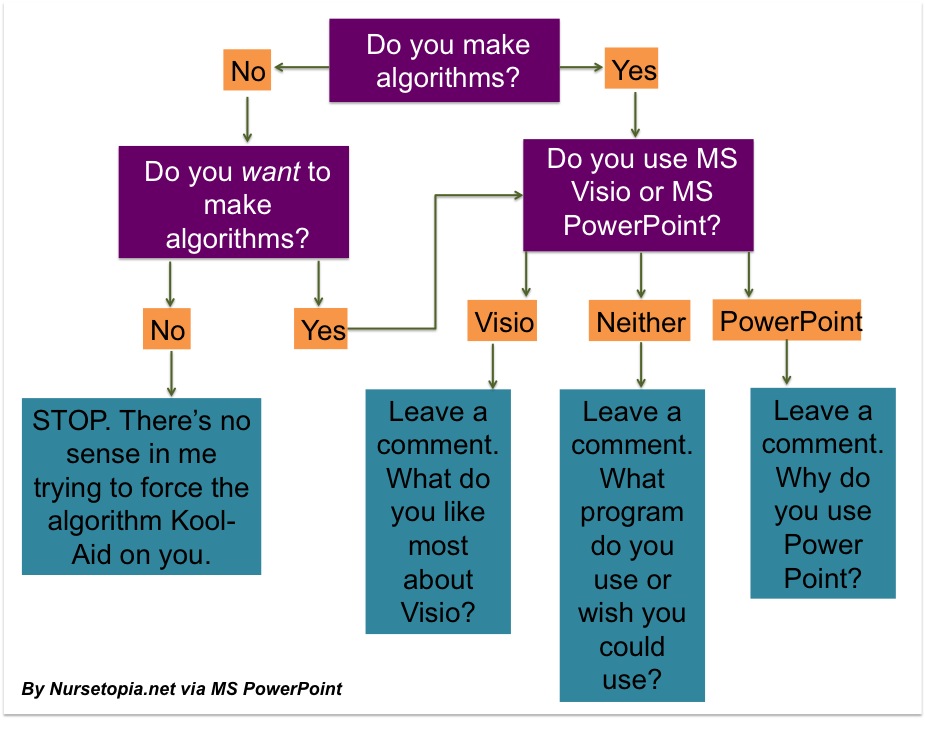I’m not sure when it happened, but it seems like algorithms and “pathways” have overtaken healthcare. I’m not complaining; I love it. I’m a visual person, so when people explain processes to me, I tend to draw them as I’m listening or reviewing my notes. I’ve found that algorithms turn gray processes and care to black and white. They clarify exactly what everyone can and should do rather than leave that information in one person’s head. I frequently make – and revise – algorithms. They’re easy, artful, practical, and just plain smart work.
 I make algorithms one of two ways – in Microsoft Visio or in Microsoft PowerPoint. You could also use Microsoft Publisher, but I prefer not to use it for algorithm creation simply because I know PowerPoint shortcuts and tools much better. Visio is intended to develop algorithms and pathways. It’s incredibly easy to use (especially if you know how to use PowerPoint or Publisher) and takes all the guesswork out of making straight lines and centering text. If you don’t have Visio but make a lot of algorithms (or are planning to do so), purchasing Visio is well worth the investment. No, Microsoft Visio is not paying me for this article; I just love Visio that much. I know, it’s geekily comical. I am unashamed.
I make algorithms one of two ways – in Microsoft Visio or in Microsoft PowerPoint. You could also use Microsoft Publisher, but I prefer not to use it for algorithm creation simply because I know PowerPoint shortcuts and tools much better. Visio is intended to develop algorithms and pathways. It’s incredibly easy to use (especially if you know how to use PowerPoint or Publisher) and takes all the guesswork out of making straight lines and centering text. If you don’t have Visio but make a lot of algorithms (or are planning to do so), purchasing Visio is well worth the investment. No, Microsoft Visio is not paying me for this article; I just love Visio that much. I know, it’s geekily comical. I am unashamed.
If you don’t have Visio, you can still develop your algorithms in PowerPoint. It may take a little longer than Visio, but hey – it works. Open a blank file. You’ll only need to use one PowerPoint slide for this. Start adding your quadrilateral shapes, overlaid text boxes, and add in arrows. Capture or highlight all the items on the slide, group them, and then right-click to save the file as a picture to then insert into other documents. It’s pretty easy once you get the hang of it.
Do you use or create algorithms in your healthcare setting?





